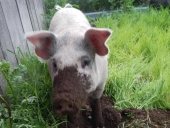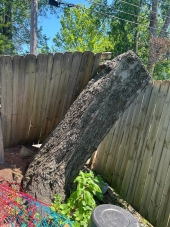
 3
3




Earthworks are the skeleton; the plants and animals flesh out the design.
 4
4




 3
3




"Study books and observe nature; if they do not agree, throw away the books." ~ William A. Albrecht
 6
6




I don't own the plants, they own me.




"Disturbance is critical" Joel Salatin
 2
2












Regards, Scott




Myron Platte wrote:I fell really stupid and embarrassed that I have to ask this question, but here it is: can I spread mulch over seeds? I know some seeds need sunlight to sprout and some don’t, maybe I should spread mulch and drop seeds on top of that? For context, I’m really lazy and want to be able to broadcast seed everything, but the question still remains for pushing-theseeds-in planting. Maybe I plant in the fall on top of the winter blanket? I’m so confused and I have analysis paralysis over it. What I’m worried about is that they say that mulch suppresses weed seeds. Won’t it also suppress crop seeds? Do I have to start everything indoors and transplant them outside? That doesn’t make sense, because nature doesn’t do things that way.
A build too cool to miss:Mike's GreenhouseA great example:Joseph's Garden
All the soil info you'll ever need:
Redhawk's excellent soil-building series





 1
1








Bob Waur The Elder
Eat what you can, and what you can't you can
<Farm wisdom> Sell the best and eat the rest




. . . bathes in wood chips . . .
 1
1




Myron Platte wrote:I fell really stupid and embarrassed that I have to ask this question, but here it is: can I spread mulch over seeds? I know some seeds need sunlight to sprout and some don’t, maybe I should spread mulch and drop seeds on top of that? For context, I’m really lazy and want to be able to broadcast seed everything, but the question still remains for pushing-theseeds-in planting. Maybe I plant in the fall on top of the winter blanket? I’m so confused and I have analysis paralysis over it. What I’m worried about is that they say that mulch suppresses weed seeds. Won’t it also suppress crop seeds? Do I have to start everything indoors and transplant them outside? That doesn’t make sense, because nature doesn’t do things that way.




This is all just my opinion based on a flawed memory




















Earthworks are the skeleton; the plants and animals flesh out the design.
 1
1




Regards, Scott






 1
1




Myron Platte wrote:I feel really stupid and embarrassed that I have to ask this question.
So many plants, so little time




. . . bathes in wood chips . . .





Some places need to be wild
 2
2








. . . bathes in wood chips . . .

|
I can't take it! You are too smart for me! Here is the tiny ad:
Homestead Pigs Course
https://permies.com/wiki/365748/Homestead-Pigs
|





